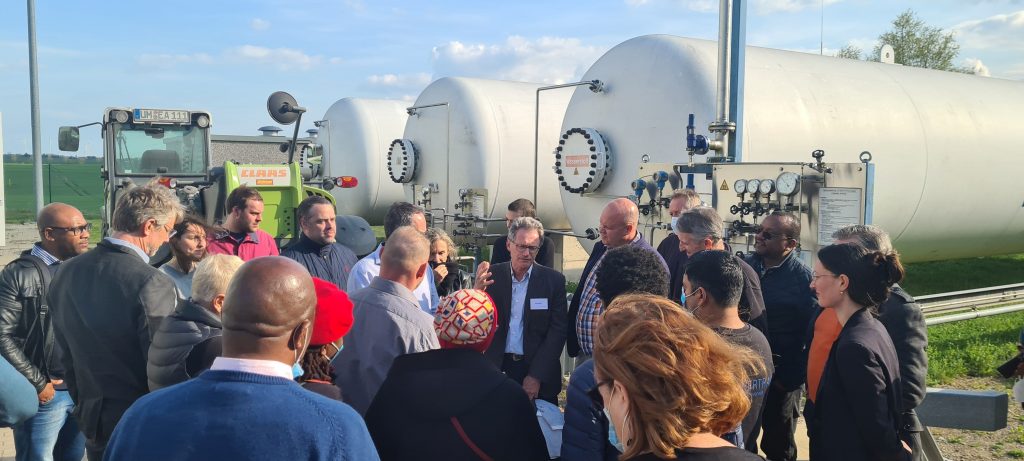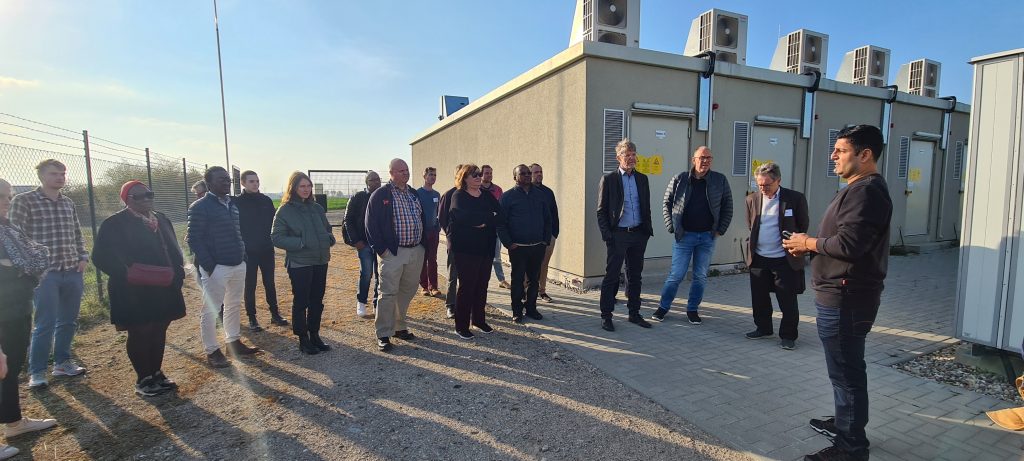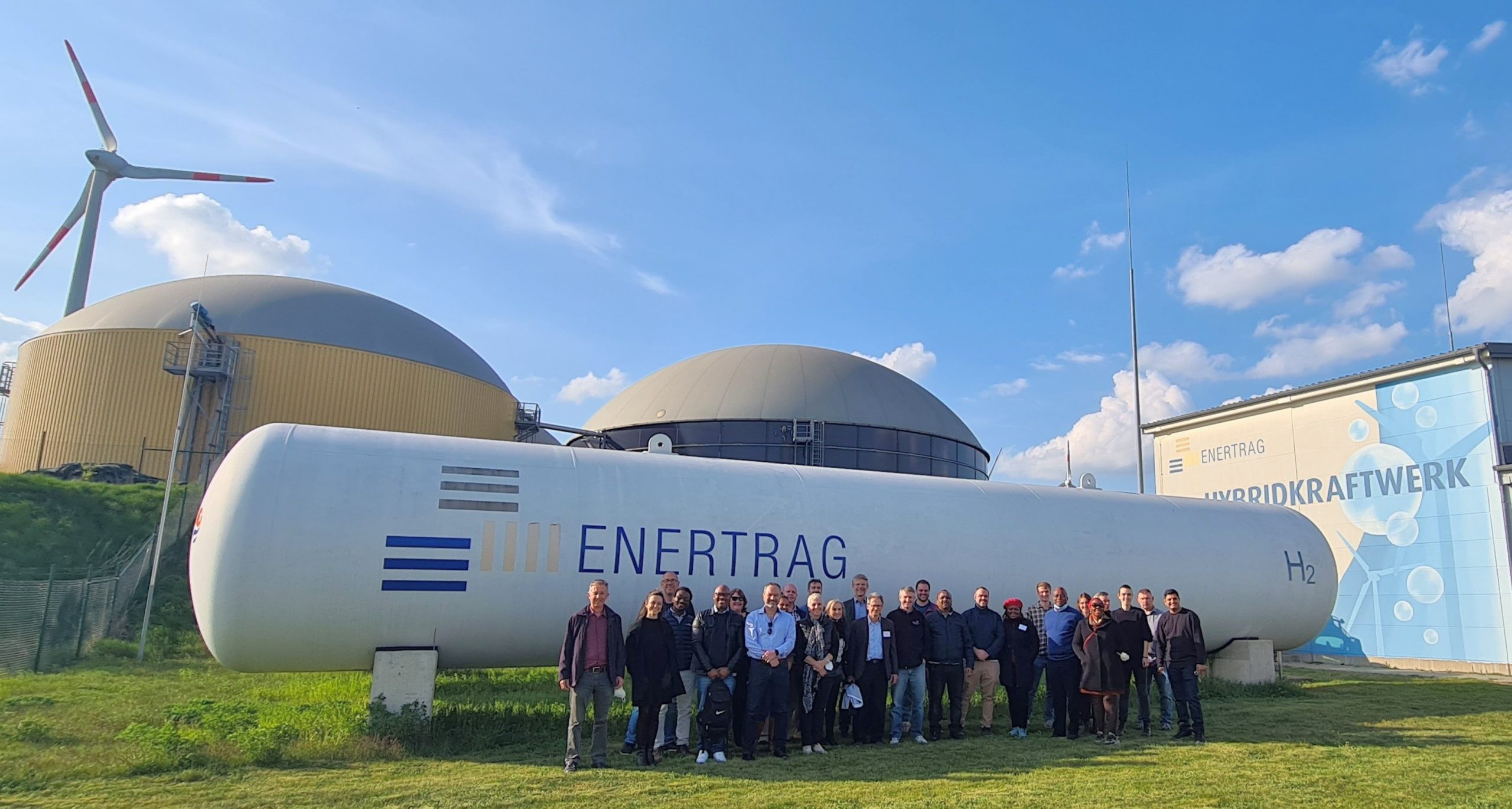From April 24 to 29, the first Train-of-Trainers on renewable Power-to-X was successfully implemented by the PtX Hub together with the national GIZ programmes H2.SA and H2Brasil.
Fifteen experts from South Africa, Brazil and Argentina came to Berlin for a week with the goal of becoming trainers on renewable PtX. An intense week full of content related to the PtX world, but also valuable didactic lessons about adult learning, was eased up with an excursion to ENERTRAG – an exemplary case of coupling renewable energy sourcing from wind and solar with the production of green hydrogen.
The group was welcomed by Dr. Gunar Hering, COO of ENERTRAG, who introduced the group to the project located in Brandenburg’s Uckermark. The project is a combined hydrogen and power plant (CHP) with its own grid collector, generating about 400 MW of wind power, 21 MW of biogas and up to 44 MW battery storage.
From the German countryside to a pioneering South African production site
However, ENERTRAG is not only active in the German countryside, but operates worldwide with around 900 employees. One of the international projects that ENERTRAG is involved in is the Concrete Chemicals GmbH. The Concrete Chemicals project follows an integral approach across the entire H2 value chain and requires increased collaboration. It was founded just recently and in cooperation with South Africa’s Chemics Giant Sasol and Germany-based CEMEX. Sasol’s Secunda site currently converts large quantities of coal into fuels, chemicals, and CO2 and with its 57 Mt/a, it is one of the world’s largest CO2 point sources. The site directly employs approximately 13,000 people and is a significant economic factor for the region.
Additionally, given its role as one of the biggest regional employers, Sasol will not only have to tackle the transition from fossil fuels to carbon-neutral input, but also manage the re-training and re-skilling of their employees.
Sasol is advanced in Fischer-Tropsch Synthesis in its Secunda site. They are currently the only company to produce certified aviation fuel via the Fischer-Tropsch technology that is needed for a net-zero world. This project was of specific interest to the participants since a part of the group were South African and some work for SASOL.
After being introduced to several of ENERTRAG’s global projects, and to the basic functioning of a hydrogen plant, the group was able to visit the hydrogen production site. There, the participants could observe the coupling of wind and solar power with the waste heat of a biogas plant to produce green hydrogen, which was stored in an adjacent H2 tank.The hydrogen is also transported to a local filling station and some of the hydrogen is reverted back into the plant as energy feedstock.

Lastly, the group visited the battery site used to store RE from wind and PV, which can either draw energy from the grid, or feed energy into the grid for at least 30 minutes when needed. This battery storage is used to keep the grid at 50 hertz.
We thank ENERTRAG for the valuable presentation and insights into green hydrogen production on the ground, which was much appreciated by the trainers-to-be.

Katrin Hermann and Maren Schöttler contributed to this article.
Photos by ©GIZ
